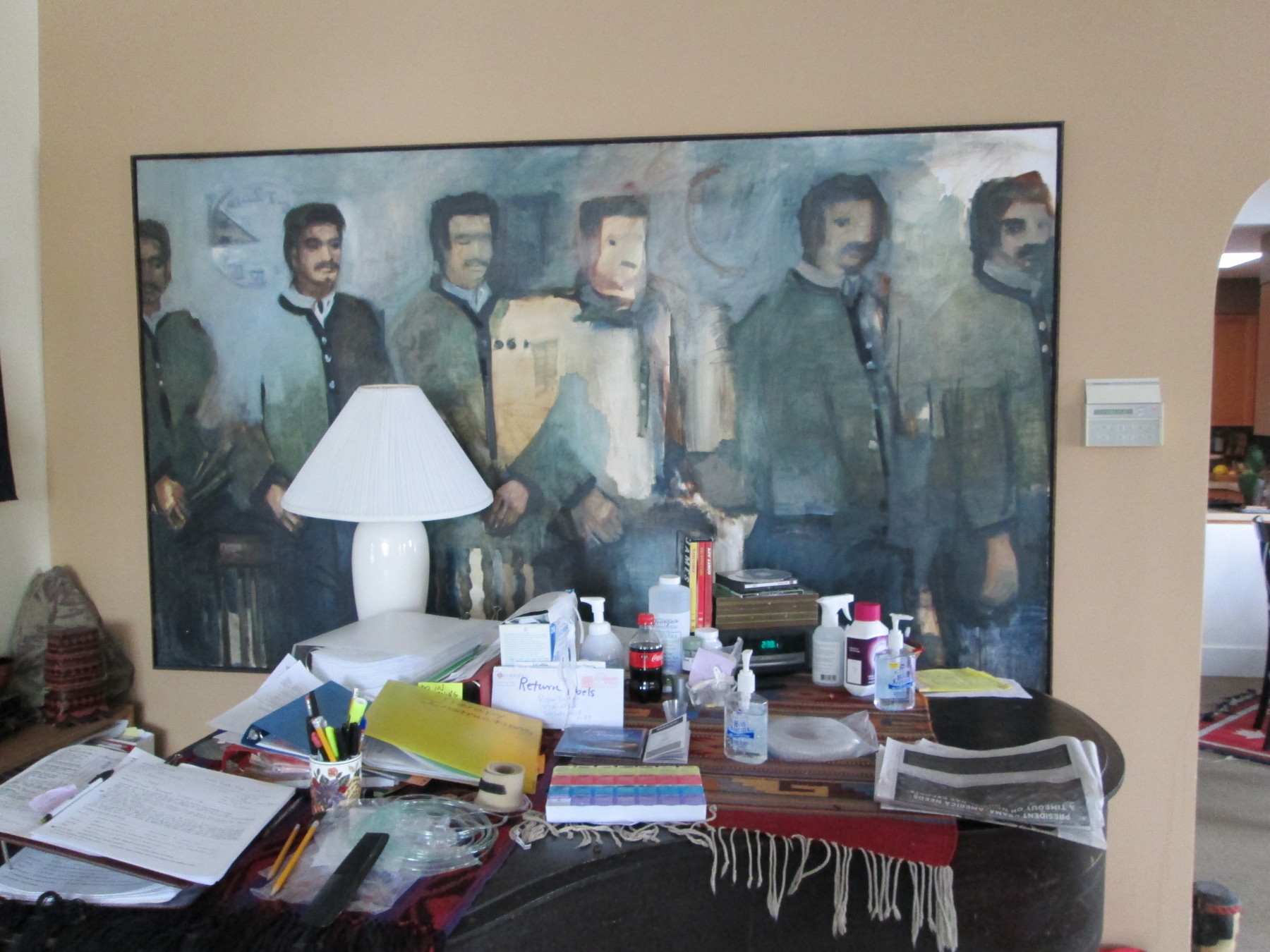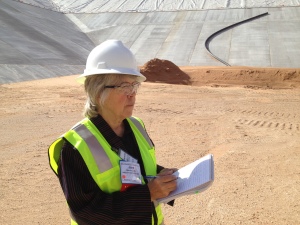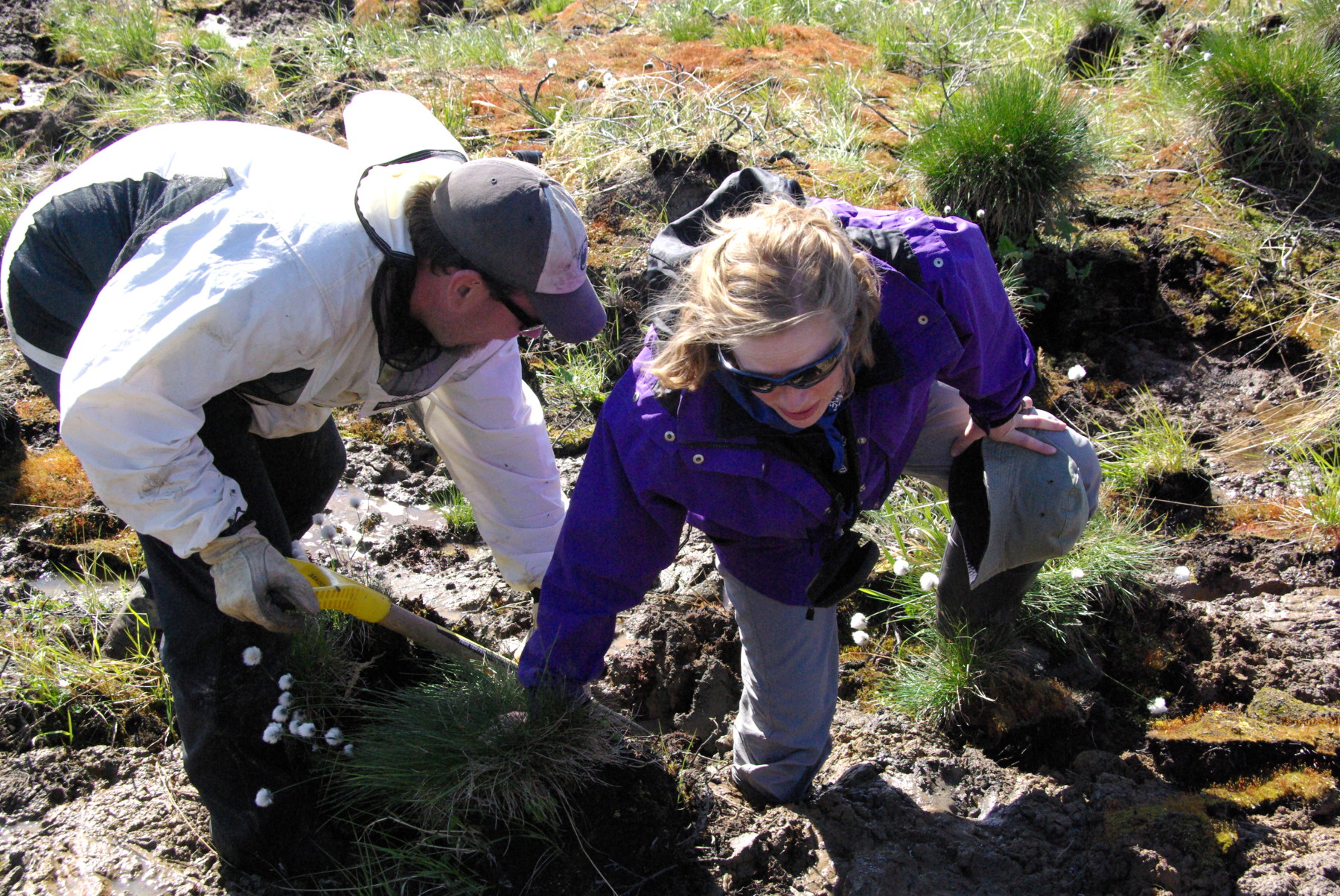
Few professions require traveling to places as diverse as the Serengeti, nuclear disaster sites, health clinics, and the homes of strangers. But for science writers, adventure is often part of the job description. Field reporting is one of the best parts of the job—and one of the most challenging.
In the course of a field-reporting trip, whether it’s across the state or across the world, an intrepid reporter might encounter anything from bad weather to language barriers to threats to life and limb. But the opportunities field reporting provides are well worth the trouble. Making good use of all the senses can yield key details that evoke a sense of place. You get to see your source in his or her element. And spending time with sources often builds a kind of trust that’s hard to create over the phone, resulting in better information and quotes—and a better story. Field reporting yields “the little touches … that can really bring a story alive,” says George Johnson, a science writer for The New York Times, National Geographic, and many other publications. “If you’re lucky,” he adds, “you get something that sends a shiver down the spine of the reader.”
If You Can Go, Then Go
As virtually any science writer who has filled notebooks in far-flung locations will advise, if reporting a story from the field is at all possible—financially and logistically—then you should do it. “You’re always going to want to go to the scene,” says Johnson. “Doesn’t everybody want to be there?” adds Jane Braxton Little, who explored the Chernobyl nuclear-disaster exclusion zone for an award-winning story about radiation impacts on forests that she co-wrote with Japan-based science writer Winifred Bird (Bird wrote about the forests around Fukushima).
For some stories, field reporting is a must. For her 2013 New York Times Magazine story about right-to-die advocate Peggy Battin and her husband Brooke Hopkins, who became paralyzed in a biking accident, Robin Marantz Henig says she knew she needed to spend time with the couple at home. “Every inch of that article had to be done in person,” she says. In some ways, the need for an in-person visit was practical: Hopkins was difficult to hear over the phone or on Skype. But it was also essential to telling the story, which “turned out to be about the interaction of the husband and wife,” Henig says. “I had to be there.” (Read more about Henig’s experience reporting and writing the story, which was selected for the Best American Science and Nature Writing 2014 anthology, in this 2013 TON interview.)

Field reporting isn’t always financially feasible or deadline-compatible, however. These days, fewer publications are willing to shell out for big reporting trips than in years past. But by cutting costs, you can make a reporting trip work even without outside funding, says Bird. She converted her van into a mini-motel, complete with futon and gas stove, which she could live out of for a week or two on reporting trips. The only risk, she says, is a little embarrassment. “You don’t exactly want the person you’re interviewing to know” that you’re staying in your car, she says, adding that she’s occasionally had to turn down requests for rides from sources.
Fellowships or travel grants can help defray field-reporting costs, too. These range from small grants of a thousand dollars or less, such as the Institute for Journalism and Natural Resources’ field-reporting awards, to $10,000 or more for large undertakings, like the fellowship from the online magazine Matter. Such trips can yield multiple stories, says Bird, which can help make an excursion worthwhile even if the costs aren’t completely covered by a publication or a grant.
Another option is to do some reporting during a vacation or another trip you already have planned, suggests Chelsea Wald, an Austria-based writer who won an award from the Society of Environmental Journalists for her 2013 Nautilus piece on ibis migration.
Do Your Homework
Before a source brings you into his or her world, you should learn what you can about that world. If she is a published scientist, read her relevant papers, and try to read the seminal papers that she cites, too, since those will give important context. If the source isn’t a scientist, find other background information to read—bios, blogs, other articles the source has appeared in or written, even social media posts. This will do two things: It will help you understand what sources are talking about when they start to nerd out about what they do, and it will reassure them that they’re in capable hands. As science writer Ed Yong noted in a TON piece about getting sources to open up, having this background knowledge can be especially useful for establishing trust if the source is “bristly or uncooperative.”
Johnson notes that doing your homework saves time in the field, too. “You want to get stuff that you can only get when you’re out there on the ground,” he says.
Schedule Enough Time—Including Time for Serendipity
If you can afford it, schedule a little more time than you think you’ll need. This leaves wiggle room to accommodate any problems that arise, and it also allows for some warm-up time for sources to get comfortable with you. Spending time with sources creates more solid connections that can pay dividends down the road, Bird says—you might get future story ideas from the source, or they might introduce you to other people doing interesting work. And sources are more likely to answer your follow-up emails and calls if you’ve spent several hours or days with them.
Little also recommends leaving what she calls “time for serendipity.” On a reporting trip, especially one that lasts a few days, it might feel like you’re wasting time if your schedule isn’t fully booked from morning to midnight with outings and site visits. But “it’s really important to leave room for the spontaneous,” Little says. Someone you visit might invite you to share a meal, or to see something you didn’t even know was there. For example, Little once joined a field trip in Ukraine with the country’s most senior foresters while reporting another story. “If I had been tightly scheduled, I would have had to say no,” she says.
Bring the Right Tools
Even in the age of technology, the field reporter’s mainstays have not disappeared: pen (or pencil) and paper. Although many writers bring audio recorders and cameras, most also take notes by hand. Little is very particular about her field notebooks—6 x 9 Gregg ruled stenographer’s note pads with hard covers—and when she found a stock of them at a local store with, as a bonus, sustainable-certified paper, she bought them all. (She wouldn’t disclose the name or location of the store).
Although it may seem obvious, make sure you have chargers, batteries, and memory cards for any electronics—all of which are easy to forget. And, if traveling abroad, bring along a converter or adapter to make sure you can actually use the chargers you brought.

Take Care of Yourself
Physical discomfort can derail a reporting project, so when packing, err on the side of caution. Little once found herself freezing in her tent on a reporting trip to Yosemite. “It’s important that you’re able to focus on your work,” she says. “If you’re cold at night in your sleeping bag, and you don’t sleep well, then the next day is compromised.” Bringing the right clothing and footwear for going out in the field is also important to staying in top form while reporting. A source might be so used to her fieldwork that she forgets to mention frigid temperatures, so it’s best to ask beforehand about what to wear. Wald also recommends bringing along painkillers, breath mints, and, for the addicted, caffeinated candy (“in case coffee isn’t readily available,” she explains).
Mental comfort can be just as important. Little advises minimizing anxieties before you leave: “If you’re anxious about something that’s going on way far away, in your personal life … that gets in the way.”
In the Field, Capture What You Can
Once you’re on the ground, the amount of information coming at you can be overwhelming. Every single sense, from sight to smell, can provide evocative details that will allow you to recreate a scene for the reader. But how do you manage to get it all down?
The short answer is: You can’t. Even with a notepad, recorder, and pocket camera, “you just miss things,” says Johnson. Inevitably, “someone’s going to say something—just really the perfect quote—just at the moment that you’re taking a picture, or while you’re writing down your thoughts,” he says. Sometimes, you have to just let it “disappear into the air.”
At the same time, you don’t want to rely on your memory. “Never assume that a detail is not worth writing down or that you’ll remember it later,” says Johnson. His best advice? “Relax into the situation, and try to keep your head open, and clear, and tuned to pick up little details.”
Bird recommends trying to get the key quotes down, plus as much else as you can scribble. “It’s just kind of a skill you have to build up over the years,” says Bird. Sometimes she’ll use a recorder, but she says it’s hard to juggle a recorder, notebook, and pencil, especially in trickier reporting situations (like on a shaky boat).
When you’re out in the field with a source, adds Bird, you don’t need to try to write down purely factual info that could be communicated just as easily on the phone or via email. The last thing you want, she says, is to find yourself “scrambling with your notebook on some mountainside, [asking,] ‘Wait, what is that number that you just said?’” She tells her sources that, in addition to the time they spend together in the field, she’ll want to have a phone call, sit-down interview, or in-depth email exchange as well. That way, Bird says, you can “mostly be watching them in action.”
Don’t Panic
Sometimes, things just don’t go right in the field—a scientist’s equipment goes on the fritz, say, or the weather doesn’t cooperate. But obstacles can sometimes be turned into opportunities. On a visit to a solar energy plant in southern Spain, Johnson found that he had the bad luck of encountering one of the few foggy days when the solar plant couldn’t operate. But he used the bad weather to illustrate that “even in torrid southern Spain, solar will always have to be supplemented by storage and other forms of power,” as he wrote in the 2009 piece for National Geographic.
While reporting in Alaska, Wald once found herself stuck in a thermokarst (thawed permafrost). The mishap was an annoyance because the time spent extracting her foot (and then her boot) from the mud was time she could have spent reporting and time her scientist source could have been working. Still, she made the best of the situation, writing about her misadventure for Scientific American.

Download at Night
One way to fill in the blanks you didn’t have time to capture during the day is to flesh out your notes at night. Little tries to review her field notes every day, filling in any gaps while the day is still fresh in her mind. The practice serves her well—she has sometimes gone back to such notes months or even years later. Typing up your notes and then emailing them to yourself or saving them to the cloud provides some security in case a disaster befalls a notebook or laptop.
It can be hard to find the energy to write up notes after a full day of field reporting, though. Instead, Johnson says, he often listens to his recordings on the plane ride home or plays them in the background while doing other tasks, marking down the parts he wants to come back to later. “It’s not a real efficient process,” he admits.
Parsing all the notes, recordings, and photos from the field and deciding which details to weave into scenes in the written piece is another challenge. But the reward for that effort may be a vivid scene like this one, from Johnson’s 2012 National Geographic piece “Chasing Lightning,” which profiled the late Tim Samaras’ quest to photograph lightning with an enormous high-speed camera:
It’s a good thing there’s a rumble strip running along the shoulder, because Tim Samaras can’t keep his eyes on the road. It’s summer, and he’s driving a big, black Denali pickup pockmarked by hail and pulling a 16-foot trailer outfitted with high-speed cameras and other electronic gear. A laptop computer is mounted inside the cab to the right of the driver’s seat, and with one hand on the steering wheel and the other on a trackball, Samaras is mousing his way around a weather radar map of the Oklahoma Panhandle. A blob of colors—red in the middle surrounded like an oil slick by orange, yellow, green, and blue—shows a thunderstorm forming northeast of Boise City.
“It’s starting to spit out some pretty good lightning,” he says, looking at the little yellow crosses popping up on the radar. He glances again at the laptop, where another window is tracking our position with GPS. Then comes the buzzing of his tires against the rumble strip, and he calmly steers the rolling laboratory back onto the road.

Geoffrey Giller is a TON fellow sponsored by the Burroughs Wellcome Fund. He is a freelance writer and photographer and a recent graduate of the Yale School of Forestry and Environmental Science, where he studied frogs and water contamination. He has written for Scientific American, Audubon, and other publications. A lover of all amphibians, Geoffrey especially adores salamanders and hopes one day to meet a hellbender in the wild. You can follow him on Twitter @GeoffreyGiller and see some of his photography at his website.


